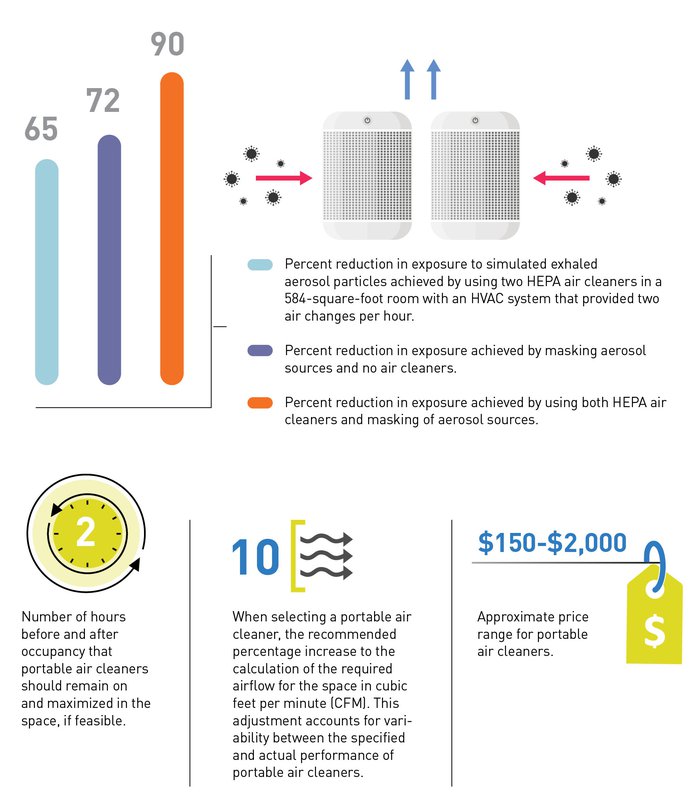

DEPARTMENTS
BY THE NUMBERS
Portable Air Cleaners and Aerosol Exposures
Portable air cleaners can be effective in reducing aerosol exposures in buildings as supplements to heating, ventilation, and air conditioning (HVAC) system ventilation and filtration, according to recent publications from CDC and the National Institute of Environmental Health Sciences. An NIEHS fact sheet discusses considerations related to selecting portable air cleaners, and an article in CDC’s Morbidity and Mortality Weekly Report characterizes their effectiveness. Select information from these publications appears below. See NewsWatch for more information about the CDC report.
From “Efficacy of Portable Air Cleaners and Masking for Reducing Indoor Exposure to Simulated Exhaled SARS-CoV-2 Aerosols— United States, 2021”:
“The optimal location for HEPA air cleaners will depend upon the unique conditions in each room, but they are likely to be most effective when they are placed as close to the occupants as is practicable. Larger reductions in exposure occur when air cleaners are used in combination with universal masking.”
Tap on the graphic to open a larger version in your browser.

SOURCES
CDC: Morbidity and Mortality Weekly Report, “Efficacy of Portable Air Cleaners and Masking for Reducing Indoor Exposure to Simulated Exhaled SARS-CoV-2 Aerosols — United States, 2021” (July 2021).
National Institute of Environmental Health Sciences: “Selection and Use of Portable Air Cleaners to Protect Workers from Exposure to SARS-CoV-2” (PDF, June 2021).